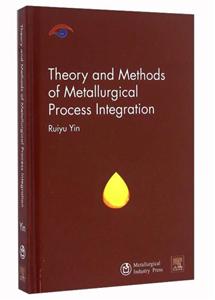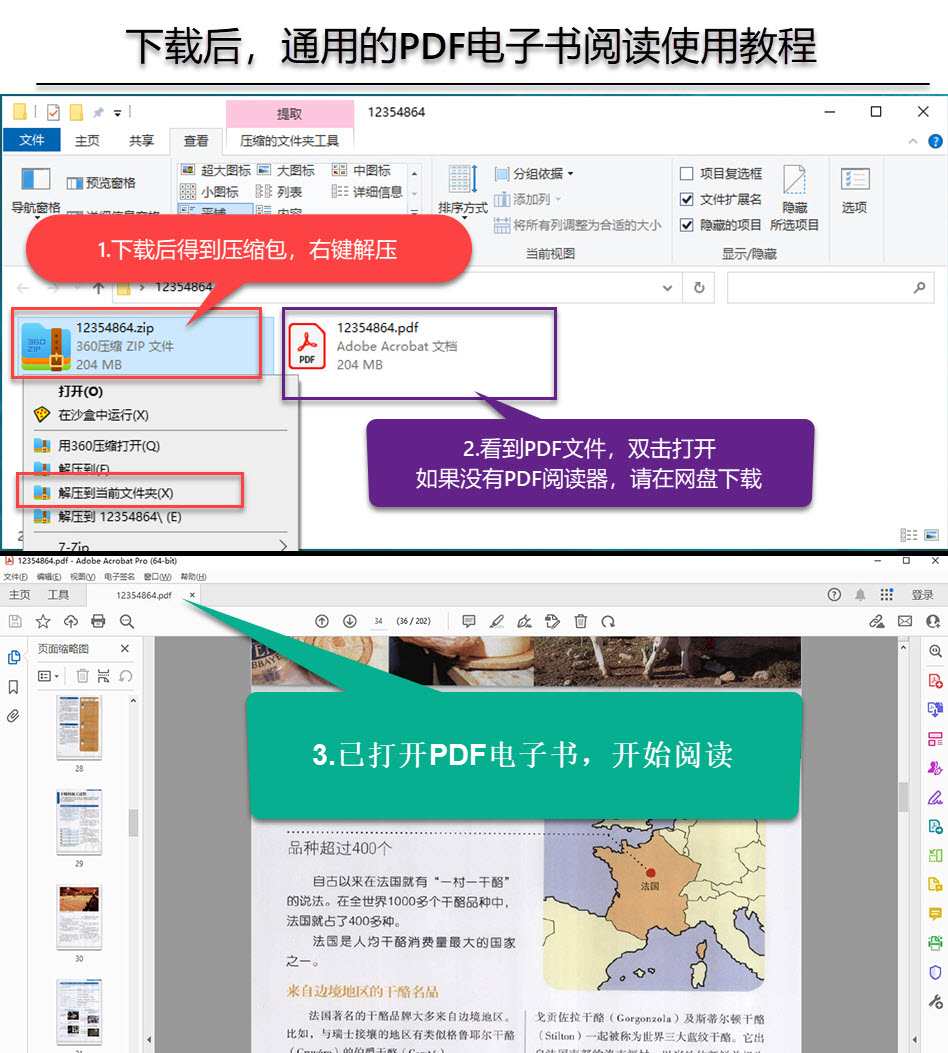冶金流程集成理论与方法-英文
内容简介
[
《冶金流程集成理论与方法(英文版)》是一本关于冶金过程工程理论与工程运行实践并重的专著。作者近年来对冶金流程动态运行的物理本质进行了深入的理论探索,以三类物理系统为理论基础,阐述了流程动态运行的基本概念、要素和规律,讨论了制造流程中物质流、能量流、信息流相互作用和协同运行的关系,提出了建立新一代钢铁制造流程的理论框架和钢厂动态精准设计的概念、理论和方法。从理论上论证了新一代钢铁制造流程应具有三个功能,即钢铁产品制造功能、能源转换功能、废弃物消纳—处理和再资源化功能。
]
目录
Author BiographyForewordPrefaceAcknowledgments1. Introduction1.1 Dynamism1.2 Structurity1.3 Continuity1.4 Embedding1.5 Synergism1.6 FunctionalismReferences2. Concept and Theory of Dynamic Operationof the Manufacturing Process2.1 Process System and Basic Concepts2.1.1 Process Manufacturing Industry2.1.2 Spatiotemporal Scales of the Processes2.1.3 Processes and Manufacturing Process2.2 Process Engineering and Manufacturing Process Engineering2.2.1 Engineering and Engineering Science2.2.2 Process Engineering2.2.3 Manufacturing Process Engineering2.3 Physical Essence of Dynamic Operation of the ManufacturingProcess System2.3.1 Features of Manufacturing Process2.3.2 Essence and Functions of Steel Manufacturing Process2.4 Operation Process and Physical Levels of DynamicProcess System2.4.1 Physical Features of Dynamic Running ofManufacturing Process2.4.2 Three Kinds of Physical Systems2.5 Evolution of Thermodynamics2.5.1 From Thermomechanics to Thermodynamics2.5.2 Classification of Thermodynamic System2.5.3 Irreversibility2.5.4 Processing Within Steady State——NearEquilibrium Region2.5.5 Linear Irreversible Process2.6 Open System and Dissipative Structure2.6.1 What Is the Dissipative Structure2.6.2 Features of the Dissipative Structure2.6.3 Formation Conditions of Dissipative Structure2.6.4 Fluctuations, Nonlinear Interaction, andSelf-Organization in Engineering System2.6.5 Critical Point and Critical PhenomenonReferences3. Basic Elements of Dynamic Operation of the SteelManufacturing Process3.1 “Flow” in the Manufacturing Processes——Mass Flow,Energy Flow, Information Flow3.2 Relationship Between Mass Flow and Energy Flow3.3 Mass Flow/Energy Flow and Information Flow3.4 “Network” of Manufacturing Process3.4.1 What Is the “Network”3.4.2 How to Study “Network”3.5 “Program” of Manufacturing Process Running3.6 Dissipation in Dynamic-Orderly Operation System3.6.1 “Flow” Patterns and Dissipation3.6.2 Operation Rhythm and Dissipation3.6.3 Distribution of Procedure’s Functions and Dissipation3.7 Forms and Connotation of Time Factors in SteelManufacturing Process3.8 Contents and ObJectives for Dynamic Operation of SteelManufacturing Process3.8.1 Recognition Thinking Way3.8.2 Research Contents of the Discipline3.8.3 Strategic Objectives of ResearchReferences4. Characteristics and Analysis of the DynamicOperation of Steel Manufacturing Process4.1 Research Method of Dynamic Operation Process4.1.1 Evolution of Vision and Conception4.1.2 Research Method of Process Engineering4.2 Dynamic Operation and Structure Optimization ofProcess System4.2.1 Process System and Structure4.2.2 Connotations of Steel Plant Structure and the Trendof Steel Plant Restructuring4.2.3 Dynamic Mechanics and Rules of the MacroscopicOperation in Manufacturing Process4.2.4 The Relationship Between Dynamic Operation andStructure Optimization of Process4.3 Self-Organization of Manufacturing Process andHetero-Organization with Information4.3.1 Self-Organization and Hetero-Organization of Process4.3.2 Self-Organization Phenomenon in Steel ManufacturingProcess4.3.3 Self-Organization and Hetero-Organization in ProcessIntegration4.3.4 Impact of Informatization on Self-Organization andHetero-Organization4.4 Dynamic Operation of Mass Flow and Time-SpaceManagement4.4.1 Dynamic Regulation of the Time and the DynamicOperation Gantt Chart4.4.2 Conception of Clean Steel and the High-Efficiencyand Low-Cost Clean Steel Production Platform4.4.3 High-Efficiency and Low-Cost Clean Steel ProductionPlatform and the Dynamic Operation Gantt Chart4.4.4 Laminar Type or Stochastic Type Running of Mass Flowin Steel Production Processes4.5 Function and Behavior of Energy Flow, and Energy FlowNetwork in the Steel Manufacturing Process4.5.1 The Deeper Understanding of Physical Essence andOperation Rules of the Steel Manufacturing Process4.5.2 Research Method and Feature of Energy Flow in theProcess4.5.3 Energy Flow and Energy Flow Network in Steel Plants4.5.4 Macroscopic Operation Dynamics of the Energy Flowin the Steel Manufacturing Process4.5.5 Energy Flow Network Control System and EnergyControl CenterReferences5. Dynamic Tailored Design and Integration Theory of Steel Plants5.1 Traditional Design and its Present Status5.1.1 How to Recognize Design5.1.2 Situation of Design Theory and Design Method5.1.3 Present Status of Design Theory and Methodology for Steel Plants in China5.2 Engineering Design5.2.1 Engineering and Design5.2.2 Innovation View of Engineering Design5.2.3 Engineering Design and Knowledge Innovation5.2.4 Engineering Design and Dynamic Tailored Solution5.3 Design Theory and Methodology for Steel Plants5.3.1 Background for Innovation of Steel Plant Design Theory and Method5.3.2 Theory, Concept, and Development Trend of Steel Plant Design5.3.3 Innovation Roadmap of Steel Plant Design Method5.3.4 Dynamic Coupling in Steel Manufacturing Process’s Dynamic-Orderly Operation5.3.5 Energy Flow Network of Steel Manufacturing Process5.4 Dynamic Tailored Design for Steel Plant5.4.1 Difference Between Traditional Static Design and Dynamic Tailored Design for Steel Plant5.4.2 Process Model for the Dynamic Tailored Design5.4.3 Core Idea and Step of the Dynamic Tailored Design5.5 Integration and Structure Optimization5.5.1 Integration and Engineering Integration5.5.2 Structure of Steel PlantReferences6. Case Study6.1 Process Structure Optimization in Steel Plant and BF Enlargement6.1.1 Development Trend of BF Ironmaking6.1.2 BF Enlargement with the Premise of the Optimization of Process Structure in Steel Plants6.1.3 A Comparison of Technological Equipment of BFs with Different Volumes6.1.4 Discussions6.2 Interface Technology Between BF-BOF and Multifunctional Hot Metal Ladle6.2.1 General Idea of Multifunction Hot Metal Ladle6.2.2 Multifunction Hot Metal Ladle and Its Practice at Shougang Jingtang Steel6.2.3 Practice of Multifunction Hot Metal Ladle at Shagang Group6.2.4 Discussions6.3 De[S]-De[Si]/[P] Pretreatment and High-Efficiency and Low-Cost Clean Steel Production Platform6.3.1 Why Adopt the De[S]-De[Si]/[P] Pretreatment6.3.2 Analysis-Optimization of Procedure Functions and Coordination-Optimization of Procedure Relationships in the De[S]-De[Si]/[P] Pretreatment6.3.3 A Case Study on Full Hot Metal Pretreatment—— Steelmaking Plant in Wakayama Iron & Steel Works of Former Sumitomo Metal Industries6.3.4 Different Types of Steel Plants with De[S]-De[Si]/[P] Pretreatment in Japan6.3.5 Development of De[S]-De[Si]/[P] Pretreatment in Korea6.3.6 Design and Operation of De[S]-De[Si]/[P] Pretreatment at Shougang Jingtang Steel in China6.3.7 A Conceived High-Efficiency and Low-Cost Clean Steel Production Platform (Large-Scale Full Sheet Production Steelmaking Plant)6.3.8 Theoretical Significance and Practical Value of De[S]-De[Si]/[P] Pretreatment6.4 Optimization of Interface Technology Between CC and Bar Rolling Mill6.4.1 Technological Base of Billet Direct Hot Charging6.4.2 Practical Performance of Billet Direct Hot Charging Between No.6 Caster and No.1 Bar Rolling Mill6.4.3 Practical Performance of Billet Direct Hot Charging Between No.5 Caster and No.2 Bar Mill6.4.4 Progress on Fixed Weight Mode6.4.5 DiscussionsAppendix A: Turnover Time Statistics of Steel Ladle in No.2Steelmaking and Hot rolling Plant in TangsteelReferences7. Engineering Thinking and a New Generation of Steel Manufacturing Process7.1 Engineering Thinking7.1.1 Relationship Among Science, Technology, and Engineering7.1.2 Characteristics of Thinking Mode in Chinese Culture7.1.3 An Engineering Innovation Road in the “Reductionism” Deficiency7.2 Engineering Evolution7.2.1 Concept and Definition of Evolution7.2.2 Technology Advancement and Engineering Evolution7.2.3 Integration and Engineering Evolution7.3 Thinking and Study of a New Generation of the Steel Manufacturing Process7.3.1 Conception Study of Steel Manufacturing Process7.3.2 Study of Top Level Design in the Process7.3.3 Process Dynamic Tailored Design7.3.4 Study of the Entire Process Dynamic Operation Rules7.3.5 Some Recognization for the New Generation of the Steel Manufacturing Process7.4 Development Direction of Metallurgical Engineering in the View of Engineering PhilosophyReferencesIndex
封面

书名:冶金流程集成理论与方法-英文
作者:殷瑞钰
页数:314
定价:¥199.0
出版社:冶金工业出版社
出版日期:2016-08-01
ISBN:9787502471682
PDF电子书大小:79MB 高清扫描完整版
资源仅供学习参考,禁止用于商业用途,请在下载后24小时内删除!

